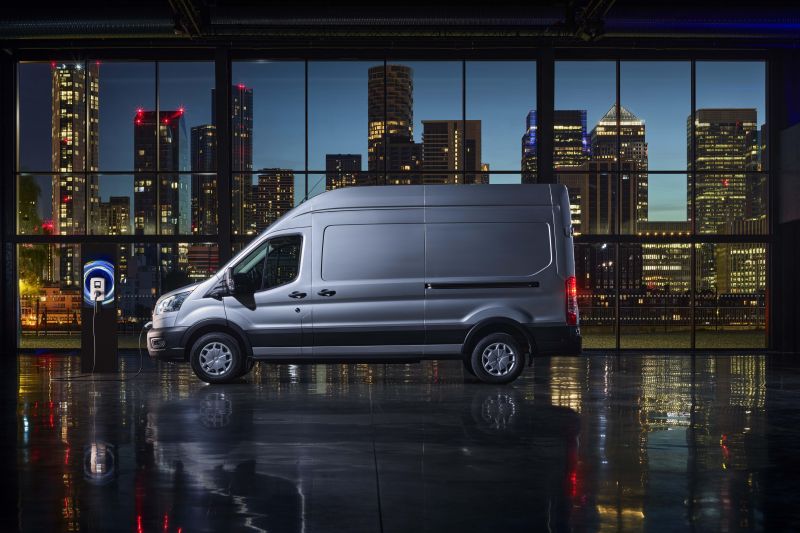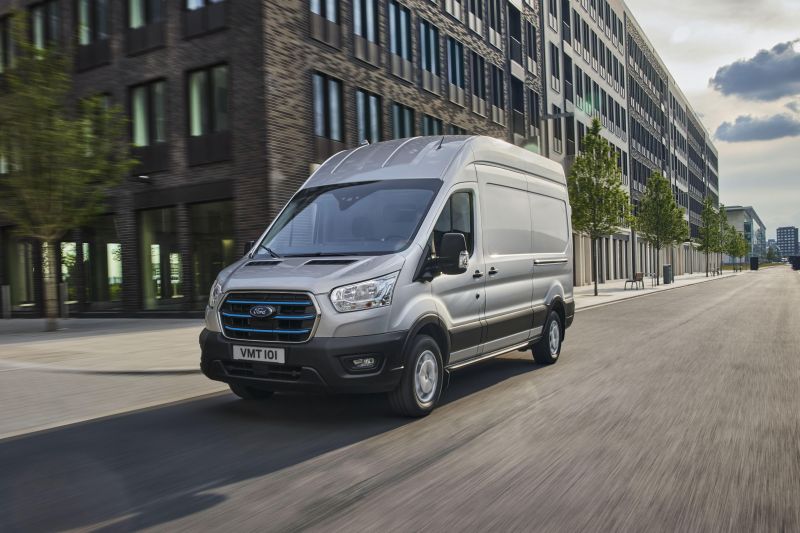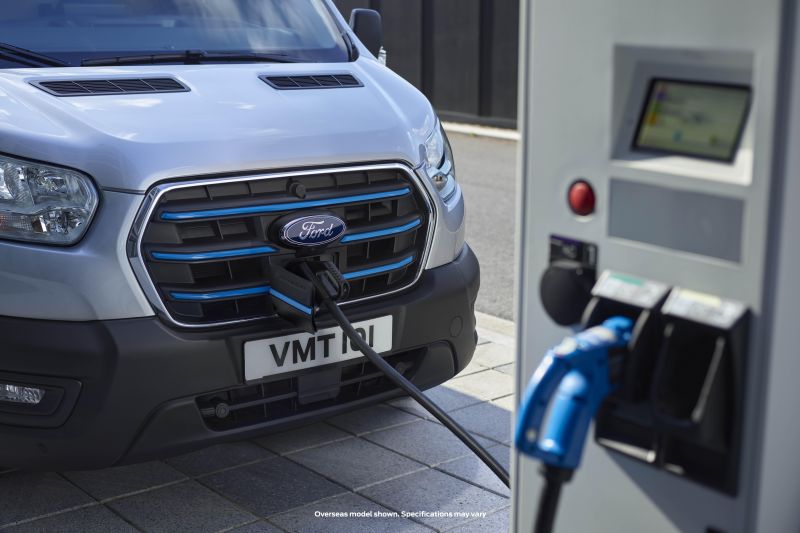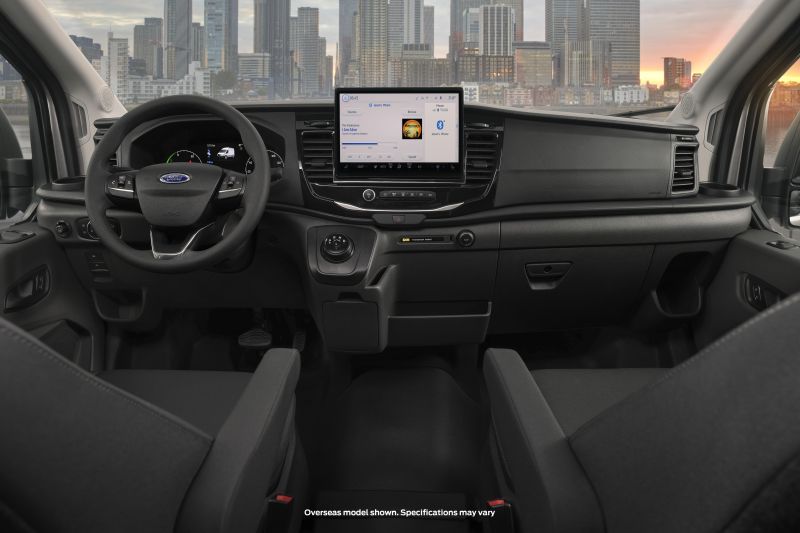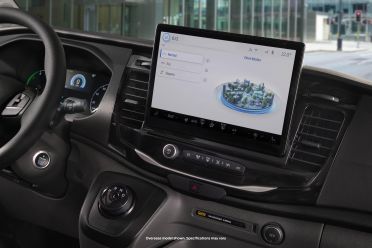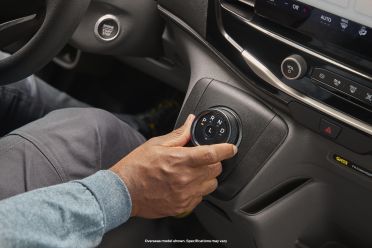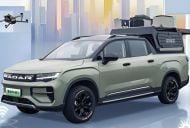Ford Australia’s first electric vehicle will be the e-Transit, set for launch in mid-2022.
The e-Transit will be available exclusively in rear-wheel drive 420L long-wheelbase configuration, and will arrive after Ford Australia’s first plug-in hybrid, the Escape PHEV.
When it arrives here, it will be sold through Ford dealerships. Pricing has yet to be announced.
Ford says an initial network of 20 dealers will have specialist EV workshop equipment to service the e-Transit, though this will grow as demand and its range of EVs grows.
The company is collaborating with JET Charge to roll out charging infrastructure at its dealers.
It’ll be covered by Ford’s five-year, unlimited-kilometre warranty, along with an eight-year, 160,000km warranty for the battery and high-voltage electric components.
In terms of a future value proposition, for either the vehicle or the battery itself, Ford Australia says it’s investigating what it can offer.
“We’re looking at this pretty hard actually, certainly commercial customers have a need, it’s not just the vehicle,” said Ford Australia president Andrew Birkic.
“Services is also an important part, and how is that incorporated, so we need to have a holistic approach, the way that we do with customers and we’re certainly developing our point of view on that currently.”
The e-Transit uses a 68kWh battery, good for a driving range of up to 317km on the stricter WLTP test cycle.
Its single electric motor produces 198kW of power and 430Nm of torque.
In contrast, the standard Transit pumps out 125kW and 390Nm from its 2.0-litre turbo-diesel four-cylinder engine.
The e-Transit supports both AC charging and DC fast-charging.
The 11.3kW on-board charger can deliver a 100 per cent charge in up to 8.2 hours using AC power, while the e-Transit can be charged at up to 115kW using a DC fast-charger.
That means the battery can be taken from 15 to 80 per cent in around 34 minutes.
While charging, you can use Scheduled Pre-Conditioning to ensure the temperature inside the van is to your liking when you take it off charge.
An Eco drive mode is said to provide an 8-10 per cent improvement in energy usage, limiting top speed, regulating acceleration and optimising climate control.
The e-Transit has a gross vehicle mass of up to 4.2 tonnes, with a targeted payload of 1616kg.
The location of the battery underneath the body, as well as the use of a heavy-duty semi-trailing arm suspension, ensures cargo capacity is unchanged: 11.3m3 in mid-roof specification, 12.4m3 with the high roof.
Inside, the e-Transit will be the first product Ford Australia will sell with the latest generation of its infotainment system, known as Sync 4.
It’ll be the first large electric van on the Australian market.
The electric versions of the Fiat Ducato, Mercedes-Benz Sprinter and Renault Master, among other large electric vans sold in Europe, aren’t sold here. That leaves only the small Renault Kangoo Z.E. and BYD T3.
Ford Australia says it has chosen the e-Transit as its first electric vehicle due to the brand’s continued strong presence in the commercial vehicle segment.
It hasn’t had a wealth of options, however, with the Mustang Mach-E once again ruled out for Australia due to global demand.
We won’t be waiting long for the e-Transit, which has just launched in the US and has yet to launch in Europe.
The e-Transit will be one of at least five new electrified vehicles Ford Australia will launch by the end of 2024.
Ford says the e-Transit’s 317km range figure is more than 2.5 times the average distance a commercial van travels each day.
It also quoted recent YouGov research which found 58 per cent of businesses want EVs to join their fleets in the future.
Globally, Ford is investing US$30 billion (approximately A$40 billion) in electrification by 2025.
It’s also aiming to be carbon neutral by 2050, with its plants running off 100 per cent local renewables by 2035.
MORE: Everything Ford Transit





